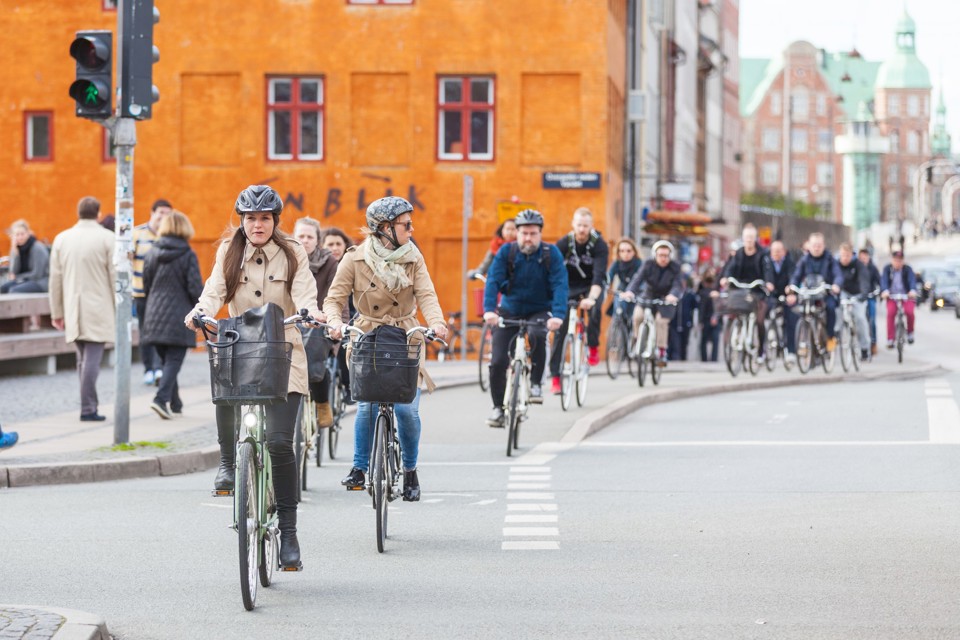Plans for new garden towns and villages will leave residents car dependent, new research by Transport for New Homes suggests.
The group examined plans for 20 so-called ‘Garden Communities’ and found that they will create up to 200,000 car-dependent households, generating high levels of traffic on surrounding roads including motorways.
Jenny Raggett, project co-ordinator at Transport for New Homes, said: “Put forward by the Government as an alternative to characterless estates, Garden Villages may well end up with more tarmac than garden, limited public transport, and few ‘village’ amenities to walk or cycle to.”
City transport systems are being re-imagined for life after lockdown. Find out how in the latest digital edition of Fleet News by clicking here and what impact it could have fleet operators by clicking here.
The Transport for New Homes study says that despite the new emphasis put on cycling and walking as a result of coronavirus many of the proposed garden villages “will be largely unsuitable for walking and cycling due to their remote location, their layout and their lack of safe routes in and out of the estate. Local facilities may well never materialise in these car-based developments”.
Transport for New Homes found strong evidence that:
- All 20 of the Garden Communities examined in detail will encourage car dependent lifestyles with the car the primary mode of transport at every single one.
- These 20 settlements will create up to 200,000 car dependent households.
- Only one settlement (Aylesham – although itself not funded by Homes England) offers amenities and a railway station within one mile of every home, though the train service is infrequent and there are no safe cycle routes to access it.
- All other settlements failed to provide access to amenities and a railway station within one mile of all new homes with safe walking and cycling routes.
- None of the 20 settlements will provide bus services to all households all day, all week.
- Cycle routes from Garden Villages into nearby towns will often be long and dangerous.
- Residents will have to walk up to seven miles to access a railway station or go to the shops.
Steve Gooding, director of the RAC Foundation and a chair of the steering group for Transport for New Homes, said: “The vision for garden developments is laudable but is at grave risk of being missed – far from being delivered in a way that would encourage us to leave our cars at home the reality looks set to ingrain car dependence.”
Gooding says that living completely ‘car-free’ is probably a “pipe-dream outside the centres of our towns and cities”.
“The reality is that many of us will still wish to own and use our cars but not want to be forced to get behind the wheel for every trip we make.
“Good road connections matter: they’re vital for buses, bicycles and, as we’ve learnt in recent weeks, delivery vans too, not just for the private motorist.
“But they have to be designed with a sensible layout, including wide footways so that walking to the local shops or to school is a safe, practical and appealing proposition.”
Raggett claims that rather than seeing the emphasis on public transport that the Garden Communities prospectus promised, with new stations funded at the heart of the development, or firm investment in modern bus rapid transit, light rail or trams, nearly every Garden Community comes with a long list of road improvements such as bypasses, link roads and new motorway junctions.
“Although the theme of the ‘local’ and ‘self-sufficient’ is the official line,” she said, “the language adopted in the promotion of Garden Villages makes great play of their strategic location for long-distance commuting. It is doubtful, given this emphasis, that local shops and services will flourish.”
The recommendations in Transport for New Homes’ report include:
- Commission an urgent reassessment of the sustainability in transport terms of all planned Garden Communities and do not give outline planning permission until it is clear that sustainable transport elements in each vision are fully funded and specified.
- Build close to existing town centres or create strings of developments along public transport routes, rather than scattering developments around the countryside.
- Direct Government funding to public realm, place-making, and sustainable transport including Dutch-style cycling networks, local rail, rapid transit, buses and trams.
- Make sure that sustainable transport infrastructure is funded to extend beyond the site boundary.
- Put kickstart funding and other financial incentives in place to establish shops, cafes, pubs, shared workspaces and other local facilities with the development, creating a walkable community.





















Login to comment
Comments
No comments have been made yet.